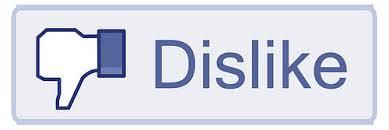
The chairman and CEO of Facebook, Mark Zuckerburg, recently announced the development of a dislike button, which would allow Facebook users to express empathy for posts— such as bad news—where a like seems inappropriate. Facebook has already become a difficult space for several businesses, from an open outlet for negative feedback to the decreased organic reach of content; it often takes an army to manage this battlefield.
PR specialists need to consider the potential impact— both good and bad— this could have on companies. First, the good impact. A dislike button could be useful when attempting to crowd-source your audience. Turning posts into a voting system, fans can like or dislike a post to give a company better feedback on products or ideas. From an insights perspective, it can help page owners see what type of posts their fans like and what type of content they prefer. Some real possibilities are here when it comes to better engagement and better conversation between brands and consumers. However, as with life, we must take the good with the bad…
The fear for most brands is a severe backlash of an overwhelming amount of dislikes on products or posts. As with the ability to write reviews, this gives the consumer an easy way to show their dissatisfaction with a company. Unfortunately, unlike reviews, brand representatives are unable to engage or resolve the issue. And for those companies that hide the negative posts, you cannot hide a dislike. It is still unknown how exactly the dislike button will be implemented, so there is a possibility that brands will have an option on whether or not they include it on a post. If brands do not have a choice, this could lend a new avenue for trolling and unfavorable competition.
Here is how you can prepare for this upcoming change:
Stay in the know: Since the dislike button’s implementation is still unknown, as is the release date, keep an eye on the news by setting up a Google Alert.
Make a game plan: So your last Facebook post just received 100 dislikes, what are you going to do? Will you edit the post? Remove it? Provide clarification in the comments? Develop a plan on what will be done and who will provide quick implementation if you don’t already have a social media manager.
Keep everyone in the loop: Like we mentioned earlier, it often takes an army to manage social media. Make sure everyone from the intern to the CEO knows the plan.
New engagement buttons can be good, bad, and ugly, and with 11 years of experience now under their belt, we hope Facebook makes these changes carefully and with good consideration on potential backlash against their biggest moneymakers: brands and small businesses.
